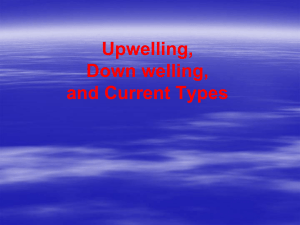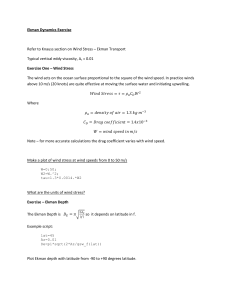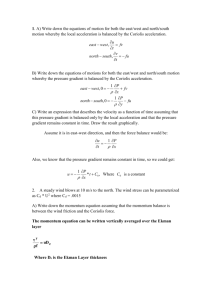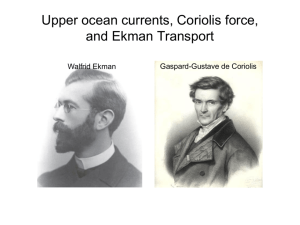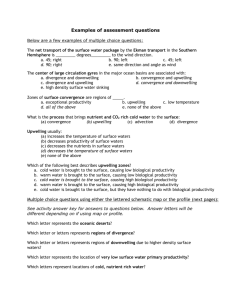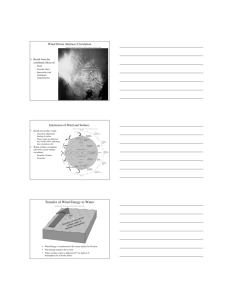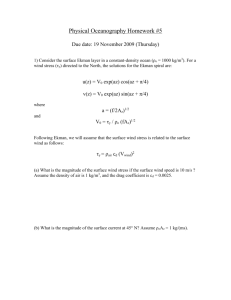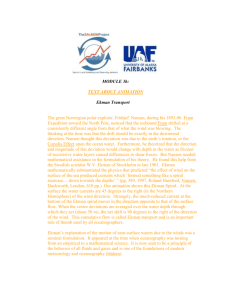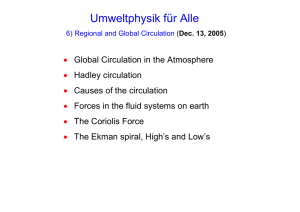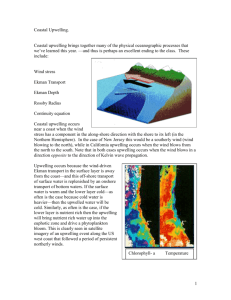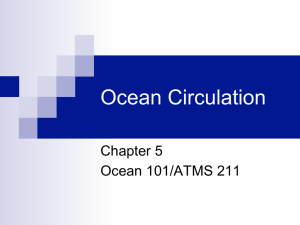THE WATER PLANET
advertisement
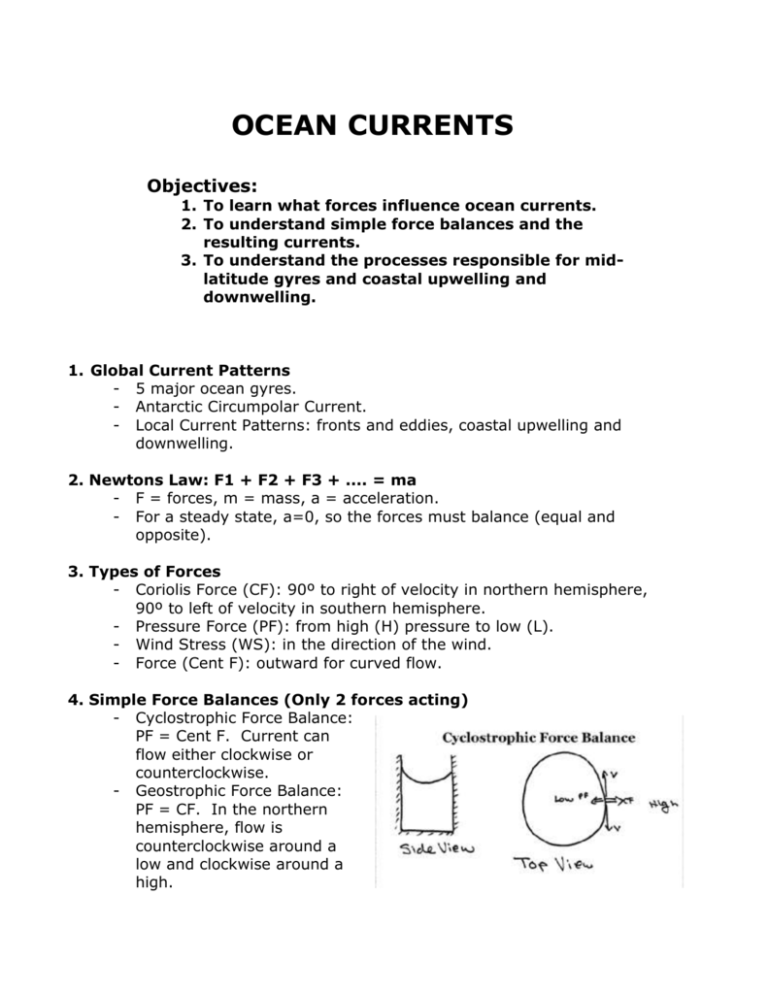
OCEAN CURRENTS Objectives: 1. To learn what forces influence ocean currents. 2. To understand simple force balances and the resulting currents. 3. To understand the processes responsible for midlatitude gyres and coastal upwelling and downwelling. 1. Global Current Patterns - 5 major ocean gyres. - Antarctic Circumpolar Current. - Local Current Patterns: fronts and eddies, coastal upwelling and downwelling. 2. Newtons Law: F1 + F2 + F3 + .... = ma - F = forces, m = mass, a = acceleration. - For a steady state, a=0, so the forces must balance (equal and opposite). 3. Types of Forces - Coriolis Force (CF): 90º to right of velocity in northern hemisphere, 90º to left of velocity in southern hemisphere. - Pressure Force (PF): from high (H) pressure to low (L). - Wind Stress (WS): in the direction of the wind. - Force (Cent F): outward for curved flow. 4. Simple Force Balances (Only 2 forces acting) - Cyclostrophic Force Balance: PF = Cent F. Current can flow either clockwise or counterclockwise. - Geostrophic Force Balance: PF = CF. In the northern hemisphere, flow is counterclockwise around a low and clockwise around a high. - Ekman Layer: WS = CF. In the northern hemisphere, depth average flow is 90º to the right of the wind. Vertical Variation of Ekman Layer Flow: Surface velocity V0 is 45º to right of the wind. At each subsequent depth, the velocity decreases and turns more to the right. The amount of water transported forward at the surface is exactly equal to the amount of water transported backward at depth. The total transport therefore is 90º to the right of the wind. 5. Mid-Latitude Gyres: - Clockwise winds over basin cause Ekman transport towards the center of the gyre, piling up about 1 meter of water in the middle. - High pressure in the center of the gyre results in a clockwise Geostrophic flow around the gyre. - Variation of Coriolis Force with latitude results in intensified flow on the western side. 6. Wind Driven Coastal Currents (West Coast). - Downwelling: wind to north, coast on right. 1) Wind driven Ekman transport is towards shore. 2) Water elevation rises at shore as warm surface water is transported shoreward, resulting in downwelling. 3) Higher water elevation at the shore generates an offshore pressure force. This must be balanced by another Coriolis force, resulting in additional alongshore flow to the north. - Upwelling: wind to south, coast on right. 1) Wind driven Ekman transport is offshore. 2) Water elevation falls at shore as warm surface water is transported offshore, resulting in the upwelling of cold bottom water. 3) Lower water elevation at the shore generates an onshore pressure force. This must be balanced by another Coriolis force, resulting in additional alongshore flow to the south. 8. Review Questions. - Hurricanes are intense low-pressure systems with strong winds. Construct a diagram illustrating the force balance and determine the direction of flow. - Assume the wind is blowing from the south along the New Jersey coast. Describe the ocean response.
